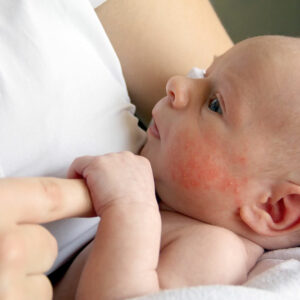Foods to avoid and treatment options for mycosis fungoides

Mycosis fungoides is a rare form of T-cell lymphoma that develops on the skin. This chronic condition is normally diagnosed among adults over the age of 50. The infection spreads gradually and the lymphocytes affect white blood cells, which may result in the formation of lesions over the skin. Here is a brief overview of the medications, treatments, and changes in food regime that can help manage the condition of mycosis fungoides.
Top foods to avoid for mycosis fungoides are
Bell peppers
These peppers are loaded with compounds like capsaicin, solasodine, and maltol. Studies show that interactions with such compounds while exploring mycosis fungoides treatment options can have a negative impact on the outcome of the treatment.
Margarine
Margarine is a type of processed substitute for butter. But many such processed foods are made up of polyunsaturated fats and contain active compounds like lauric, myristic, and palmitic acids. Like the compounds found in bell peppers, these active ingredients can interfere with the medications and treatment of mycosis fungoides.
Amaranth
This nutritious gluten-free grain is rich in micronutrients, proteins, and fibers. However, amaranth should be avoided for consumption in any form for mycosis fungoides due to its natural composition that may affect treatment outcomes.
Coriander
Coriander’s organic and chemical composition can also interfere with the effective treatment of certain types of health problems and hence generally avoided.
Note that mycosis fungoides is a type of cutaneous t-cell lymphoma categorized under Non-Hodgkin’s Lymphoma. So, several nutritional changes are generally influenced by treatment options for similar conditions. Since there are multiple stages involved, one must make regular adjustments in foods to eat and avoid reducing the risk of cancer progression. Treatment options for mycosis fungoides will vary on the basis of the stage of development. Common options include,
Photodynamic therapy
Doctors use a laser combined with certain medications to target cancer cells directly on the skin. The medication is injected into the area and a laser beam is used to activate the steroids that destroy cancer cells in the region.
Radiation therapy
If the cancer is spreading quickly, high-energy x-rays are used to destroy the infected cells. for mycosis fungoides, Total Skin Electron Beam radiation treatment is suggested.
Chemotherapy
Chemotherapy involves the use of targeted medicines to search and destroy cancer cells when injected into the bloodstream or applied as a topical patch.
Immunotherapy
Immunotherapy is done to boost the body’s immune response to fight off cancer cells. for mycosis fungoides, Interferon immunotherapy treatment can help slow down the extent of tumor growth.
Targeted therapy
Targeted therapy also involves the use of medications to destroy affected cancer cells directly. For example, corticosteroids for relieving inflammation, retinoids for slowing growth of cancer cells, lenalidomide for killing abnormal blood cells, and certain types of inhibitors may be suggested among mycosis fungoides treatment options.



